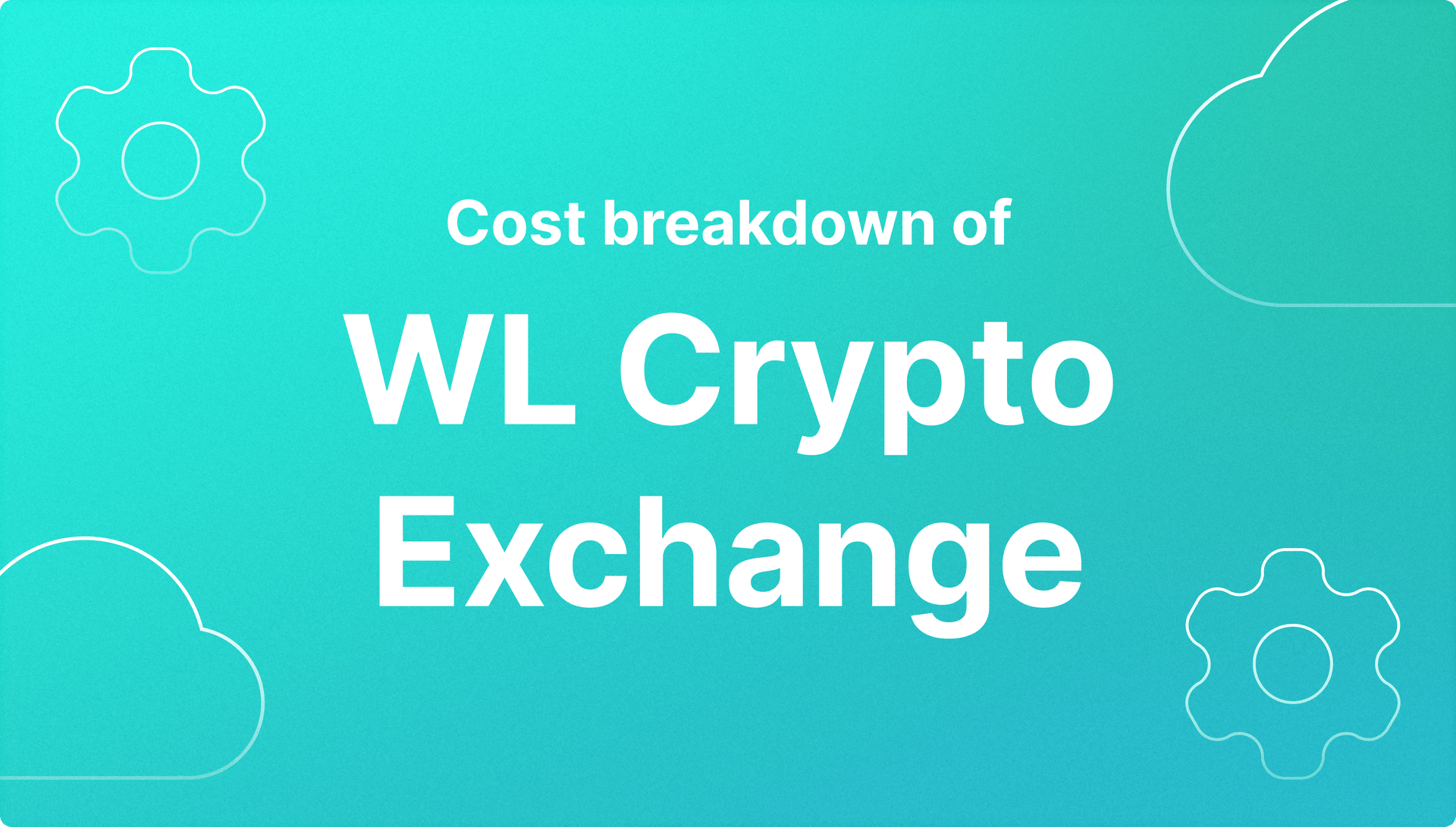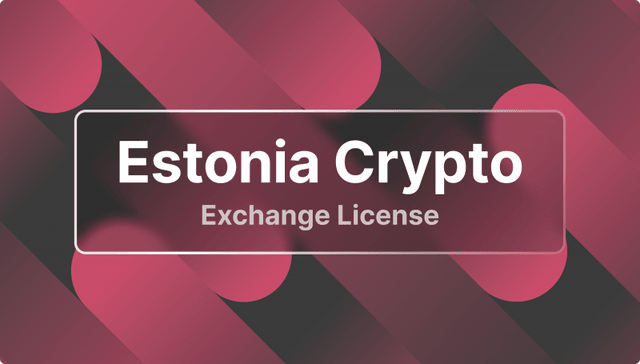Complete P2P Crypto Exchange Development Guide for 2026

The crypto trading space is rapidly growing, and what used to be exclusive to tech developers and fintech enthusiasts is now accessible to almost everyone in the world.
Peer-to-peer (P2P) exchanges are at the forefront of crypto evolution, removing intermediaries and enabling more users to engage in direct asset exchanges and control their digital assets, unlike centralized platforms. P2P exchange platforms leverage escrow systems, smart contracts, and sophisticated mechanisms to ensure secure, trustless transactions.
Developing a P2P exchange is a significant business opportunity, offering exposure to the lucrative cryptocurrency market, where Bitcoin, altcoins, NFTs, and other blockchain-based assets move quite frequently.
In this guide, we will navigate the steps to creating a secure, scalable, and compliant P2P platform, covering everything you need to know from market analysis and tech stack to smart contracts development and UI design.
Key Takeaways
- P2P crypto exchanges enable direct trading between users, reducing reliance on intermediaries.
- Escrow protocols and smart contracts are vital to ensure secure transactions between users.
- Building a peer-to-peer crypto exchange platform comes with multiple regulatory and legal challenges.
- Turnkey solutions offer an easy way to set up a crypto exchange with minimal development effort and infrastructure investment.
What is a P2P Cryptocurrency Exchange?
Peer-to-peer cryptocurrency exchanges are online platforms that enable users to buy and sell digital assets between each other without a middleman. They ensure service delivery through escrow accounts and pre-conditioned contracts that trigger once certain conditions are met.
Moreover, these decentralized platforms give user total control over their assets, data, and payment details. Unlike centralized exchanges that control user funds and process contact information, P2Ps connect buyers and sellers directly, allowing them to trade faster and more securely.
A P2P exchange’s escrow smart contract temporarily holds cryptocurrency during transactions until payment terms are met. For example, when a buyer purchases 1 BTC, their funds are held in escrow until the seller’s Bitcoin is successfully transferred to the buyer’s wallet. Only then are the funds released to the seller.
Therefore, reputation and feedback are vital to this business, reinforcing trust among anonymous traders and mitigating the risks associated with counterparty defaults.
Three key drivers make P2P exchange compelling. First, the growing demand for decentralized trading presents a significant market opportunity for innovative fintech solutions. Second, the technical infrastructure of smart contracts and escrow enables trustless interaction across borders. Third, the business rationale includes lower costs, global accessibility, and enhanced privacy.
By combining cost efficiency, transparency, and user empowerment, P2P exchanges are becoming a cornerstone in the world of cryptocurrencies.
Discover the Tools That Power 500+ Brokerages
Explore our complete ecosystem — from liquidity to CRM to trading infrastructure.
How a P2P Crypto Exchange Works
P2P trading replaces centralized oversight with automated trust through smart contracts and escrow systems. When a user lists an offer, the cryptocurrency is placed in escrow, ensuring that the buyer’s payment triggers the automatic release of funds only when the terms are satisfied.
Transactions take place via integrated payment methods that allow users to pay in crypto or fiat, while the exchange maintains a transparent record of all transactions.

Reputation mechanisms, dispute resolution workflows, and feedback systems boost trust among traders, reducing risk in anonymous environments. Users can rate counterparts, monitor completion rates, and access transaction histories, creating a self-reinforcing reliability network.
Compared to other centralized platforms, P2P exchanges can offer faster onboarding, consumer-managed wallets, and multiple payment options. Since third parties are not involved, these platforms reduce counterparty risk and increase transparency.
Smart contracts present peer-to-peer transactions as an attractive alternative to traders with concerns about privacy and ownership of assets, without their personal and banking information being supervised by administrative authorities and third-party service providers.
Benefits of Developing a P2P Crypto Exchange Platform
Developing a P2P exchange offers multiple strategic and operational advantages. Let’s explain the key benefits of these crypto exchanges:
- Community Building and Engagement: Encourages active user participation and loyalty through social features, ratings, and forums.
- Increased Market Opportunity: Access a growing base of decentralized traders and untapped regional markets.
- Elimination of Intermediaries: Reduces operational costs and counterparty risks through automated execution.
- Revenue Generation Opportunities: Earn via transaction fees, listing charges, and premium services.
- Enhanced Security and Privacy: Users retain control of private keys and benefit from escrow safeguards.
- Increased Liquidity: Facilitates higher trading volumes through diversified participant engagement.
- Customisation and Flexibility: Adapt features, UI, and payment methods to target demographics.
- Lower Transaction Costs: Minimizes fees compared to centralized alternatives, attracting more traders.
Key Steps to Develop a P2P Crypto Exchange
Building a P2P exchange requires a structured approach covering market research, technical infrastructure, regulatory compliance, and user experience. The following steps outline the strategic, operational, and technological milestones essential for launching a secure, scalable, and competitive P2P trading platform.
Step #1: Conduct Market Research and Analysis
The key to a successful P2P exchange is market research, where information about market participant demographics, their preference for payments, and market-specific regulations helps to keep the exchange on a market-driven track.
To design your risk management strategy, pricing structure, and localization plan, you have to analyze your competitors’ offerings, gaps, and trends. Without thorough market research, you wouldn't know how to plan your risk management strategy, pricing structure, and localization plan.
An exchange can be developed to satisfy customer demands and regulations by compiling information regarding usage trends, trade pair preferences, and volume amounts.
Step #2: Define Business Model and Value Proposition
A business model helps to identify the sources of income, charges, and audience. P2P Platforms make money by facilitating transactions, withdrawal fees, and special accounts.
Your value proposition is something that you have to identify yourself with, such as low costs, strong privacy protection, alternative payments, or better UX, which sets your platform apart in a competitive market.
Early identification of goals helps to resolve technical issues, roadmap functionalities, and design compliance mechanisms. Setting up business goals helps to ensure that technology implementation is aligned with profitability strategies , market positioning, and customer satisfaction.
Step #3: Choose the Right Technology Stack and Backend Architecture
Choosing the correct technology stack, which encompasses blockchain protocols, APIs, and frameworks, makes it possible to execute real-time trade executions and secure fund handling.
The modularity-based architecture and scalability factors ensure smooth incorporation of new functionalities, transactions, and market access. This can also be achieved with white-label services such as B2BROKER, which helps to enhance faster development while remaining within regulatory and liquidity guidelines.
If you are incorporating strong backend development processes, which are well-tested and proven over time, you can ensure that your exchange is capable enough to deal with a large volume of transactions and is also safe and responsive.
Looking for an Enterprise-Class Tech Stack?
Get ready-to-go solutions that enable you to grow and scale with ease
Step #4: Develop Smart Contracts and Core Platform Features
Smart contracts are the backbone of trustless P2P trading because they do not require manual input and execute according to pre-configured rules.
They securely automate escrow, order matching, fund release, and dispute resolution, ensuring that P2P transactions are performed instantly and safely. Other core features that your platform needs include wallet management, authentication protocols, and transparent transaction logs—appealing to professional traders and sophisticated investors.
However, you must carefully program these algorithms. Properly developed contracts reduce counterparty risk and increase user confidence, while poorly designed smart contracts risk execution errors and delays.
Power your Brokerage with Next-Gen Multi-Asset & Multi-Market Trading
Advanced Engine Processing 3,000 Requests Per Second
Supports FX, Crypto Spot, CFDs, Perpetual Futures, and More in One Platform
Scalable Architecture Built for High-Volume Trading

Step #5: Build a Secure and Intuitive User Interface
The adoption and retention rates are directly related to user experience, and a simple interface can focus on usability, simplicity, and responsiveness to enhance adoption and retention among traders.
The addition of functionalities such as provision of market information, a strong order book, overall market transactions history, and alert functionality could play a crucial role in maximizing engagement while offering traders more options to take control, such as interactive charting and simple onboarding processes.
A UI design can provide trust and facilitate usage, which sets such platforms apart in a competitive marketplace. As such, highlighting ease of interaction can ensure a smooth and frictionless experience for traders on such platforms, which can benefit both novice and experienced traders.
Step #6: Implement Robust Security and Compliance Frameworks
Security and compliance are integral to trust issues and regulatory affairs. Therefore, blockchain technology platforms should incorporate mechanisms such as two-factor authentication, encryption, cold wallet storage, and auditing into their design.
You will need to implement KYC and AML measures on your platform to ensure your business complies with global standards and helps counter fraudulent activity.
These, along with penetration tests and audits, make your platform more secure and long-lasting, specifically due to constantly evolving regulations related to cryptocurrencies.
Step #7: Integrate Payment Methods and Liquidity Solutions
Improve accessibility and engagement by integrating support for fiat payments, digital wallets, mobile payments, and crypto wallets into your system, making transactions more convenient.
Ensure there is a strong API infrastructure available to connect to the multiple currency payment gateway providers to allow fast and secure transactions to take place. Further, associating with reputable liquidity providers helps to stabilize order books, resulting in an ideal trading experience with low latency.
Using strong liquidity management solutions together with multiple payment options, your exchange is more likely to attract a wide range of customers, minimize slippage costs, and sustain higher trade volumes.
Step #8: Test, Launch, and Optimize the Platform
Thorough testing is required prior to launch. You should test functionality, integration, and usability to point out flaws, vulnerabilities, and inefficient workflows. Finally, you can address errors and weaknesses in a phased manner.
Finally, after these repair steps have been accomplished, a plan should be developed to roll out a scaling and refinement phase to test the platform on a selected audience.
Once everything is running smoothly, you can launch your platform, track performance metrics, and continuously optimize to ensure it is available, responsive, and secure.
Add a feedback mechanism to improve the interface experience and ensure regular software updates to keep it safe and up-to-date.
Step #9: Promote, Market, and Scale the Exchange
How can you distinguish yourself within a crowded market? Successful marketing is key to attracting business, using your technology, and making Tier-1 liquidity connections.
Develop multiple-channel marketing campaigns, such as social media, educational offerings, and community building, to attract traders to partner with and participate in strategic partnerships, influencer marketing, and event marketing.
Another thing to take into account is the importance of content marketing, webinars, and tutorials to educate your customers on the features and security of your platform. Use monitoring tools to track user acquisition, trade volume, and retention to make informed business decisions.
Deep, Reliable Liquidity Across 10 Major Asset Classes
FX, Crypto, Commodities, Indices & More from One Single Margin Account
Tight Spreads and Ultra-Low Latency Execution
Seamless API Integration with Your Trading Platform

Essential Features for P2P Crypto Exchange Platform
Platform features define usability, security, and scalability. The more functionalities you add and the more frequently you update them, the more traders are willing to interact with your platform.
Therefore, you need to plan your features by user journey and preferences, ensuring trust, efficiency, and adoption. Here’s what you can start with.
Secure User Authentication and Account Management
A strong authentication mechanism will shield your accounts against any unauthorized login attempts and make sure that no blacklisted staff members register on your service. Examples include multi-factor authentication, biometric authentication, and login monitoring.
Further, session monitoring, secure password mechanisms, and transparent account recovery processes can increase compliance and trust on the part of the customers and make it easier for customers to secure and manage their money.
These processes ensure that each login, transaction, and change to any account is safe, promoting trust on the platform.
Escrow and Smart Contract System

Automated escrow mechanisms and smart contracts ensure that both parties involved in every exchange hold funds securely until transaction conditions are fully satisfied. Also, third-party audits validate contract reliability and prevent errors, fraud, or premature fund releases.
This trustless infrastructure ensures secure, transparent trading, protecting both buyers and sellers while supporting seamless peer-to-peer cryptocurrency exchanges without reliance on centralized intermediaries.
Reputation and Rating Mechanism
Popular ways to enhance transparency and boost client confidence include implementing reputation and rating systems that track user reliability through transaction history, feedback, and completion rates.
This data-driven approach helps traders assess trustworthiness, encourages fair conduct, and reduces dispute frequency. Thus, by integrating community-driven evaluations, you can foster accountability, incentivize honest behavior, and strengthen confidence in a decentralized trading environment.
Advanced Search and Trade Matching
An intuitive search and filtering system enables users to efficiently find offers that resonate with their preferences, including currency, payment method, region, and price.
You must also ensure world-class automated trade-matching algorithms to find compatible buyers and sellers, minimize negotiation time, and execute them rapidly. By streamlining discovery and matching, these features enhance trading speed, improve user satisfaction, and provide a seamless, professional experience on the platform.
Integrated Payment Options
Expand platform accessibility and global reach by supporting diverse fiat and digital payment methods, including bank transfers, e-wallets, mobile money, and cryptocurrency wallets. As such, you must integrate with a secure API architecture to ensure smooth, compliant transactions.
The stablecoin and crypto regulations are evolving frequently. Therefore, you must accommodate payment preferences while adhering to local laws, providing frictionless, reliable settlements that foster trust and legality.
Communication and Dispute Resolution Tools
Real-time communication tools, including encrypted chat, evidence logging, and structured mediator workflows, streamline dispute resolution and instill trust. This way, traders can track transactions, provide proof, and resolve conflicts efficiently.
These integrated features improve transparency, reduce fraud risk, and maintain smooth operations, enabling secure interactions even in anonymous peer-to-peer trading environments, while strengthening overall community trust.
Multi-Layer Security Infrastructure
Crypto exchanges are naturally prone to blockchain hacks and breaches. Therefore, you must ensure layered security measures, including end-to-end encryption, DDoS protection, cold-wallet integration, and role-based administrative access.
You must also conduct continuous penetration testing, monitoring, and real-time alerts to prevent vulnerabilities and protect assets and platform integrity.
Multi-Currency and Cross-Chain Wallet Integration
Integrated wallets supporting multiple cryptocurrencies and cross-chain transactions enable seamless trading across blockchain networks.
Private key management, encrypted storage, and backup protocols are key features for enhanced security. By offering flexibility and compatibility, users can transact efficiently across diverse assets while retaining full control of their funds, creating a reliable and user-friendly trading environment.
Regulation and Licensing for a P2P Exchange
Operating a P2P exchange requires understanding legal structures, such as registered exchange operators, VASP-licensed marketplaces, or legal software providers. However, regulatory obligations vary by jurisdiction, which affects KYC/AML protocols, reporting procedures, and operational transparency.
You can streamline these processes by partnering with a licensed fintech provider like B2BROKER — a leading liquidity and software provider that streamlines compliance burden, accelerates launch timelines, and ensures adherence to global standards.
This strategic approach allows you to focus on growth and user experience while maintaining regulatory legitimacy. Choosing the right legal structure and leveraging experienced professionals enables you to operate securely, legally, and efficiently, minimizing risk and enhancing brand credibility.
How Much Does It Cost to Develop a P2P Exchange?
Crypto exchange software development costs vary based on features, scale, and approach. Key drivers include backend stack, smart contract auditing, infrastructure setup, compliance, and marketing. Your budget must also account for liquidity provision, user acquisition strategies, and ongoing maintenance.
Building a custom platform from scratch offers flexibility but comes at a higher cost. Therefore, B2BROKER’s white-label solutions are reliable for launching your exchange—faster deployment, proven infrastructure, and streamlined regulatory complexity at a lower price.

Explore how much a white label crypto exchange really costs in 2026, including setup fees, compliance, and ongoing expenses for growing brokerages.
Future Developments in P2P Crypto Exchange
The next generation of P2P exchanges will leverage Layer-2 scaling, cross-chain trading, and AI-powered analytics to enhance performance and decision-making. Platforms can further expand their offerings and attract institutional participation by integrating DeFi services, including lending, staking, and tokenized assets.

Future-ready exchanges will combine decentralization, automation, and compliance to remain competitive and align with changing user trends. Innovations in user experience, security, and interoperability will further improve adoption, enabling platforms to scale globally.
Launch Your P2P Exchange with B2BROKER
B2BROKER provides turnkey solutions for P2P cryptocurrency exchange development, combining proven infrastructure, solid liquidity connections, and global regulatory expertise. By leveraging an institutional-grade tech stack, operators can launch quickly, reduce operational complexity, and ensure compliance across jurisdictions.
Smart contract integration, multi-currency support, escrow services, 24/7 technical support, and advanced security measures are key features in the B2BROKER ecosystem. As such, you can access scalable architecture and focus on growth and user acquisition while entrusting your technical infrastructure to safe hands.
Build a robust P2P crypto exchange that grows with you! Get started now!
Launch a P2P Crypto Exchange with our Turnkey Solution
Start a fast, compliant, and high-performance global P2P cryptocurrency exchange with ease






